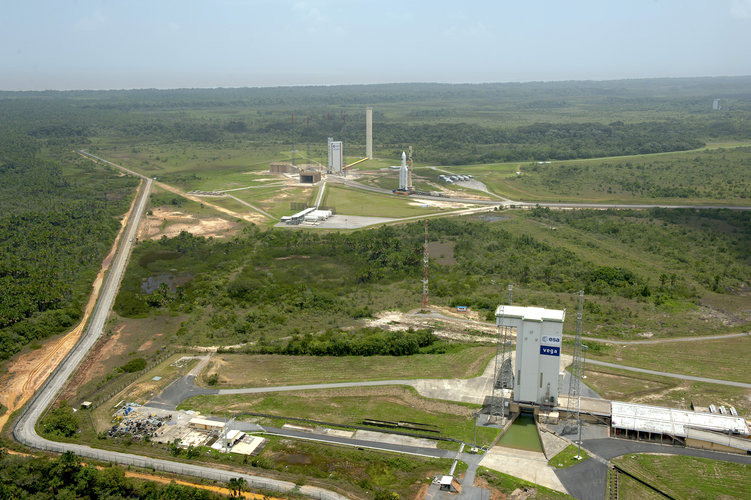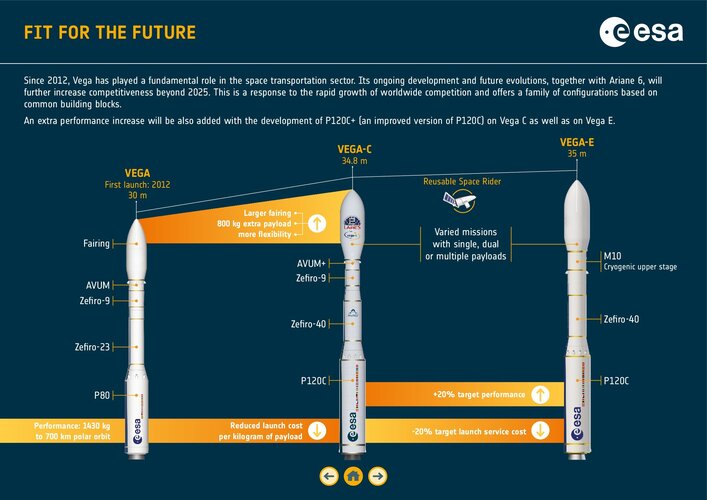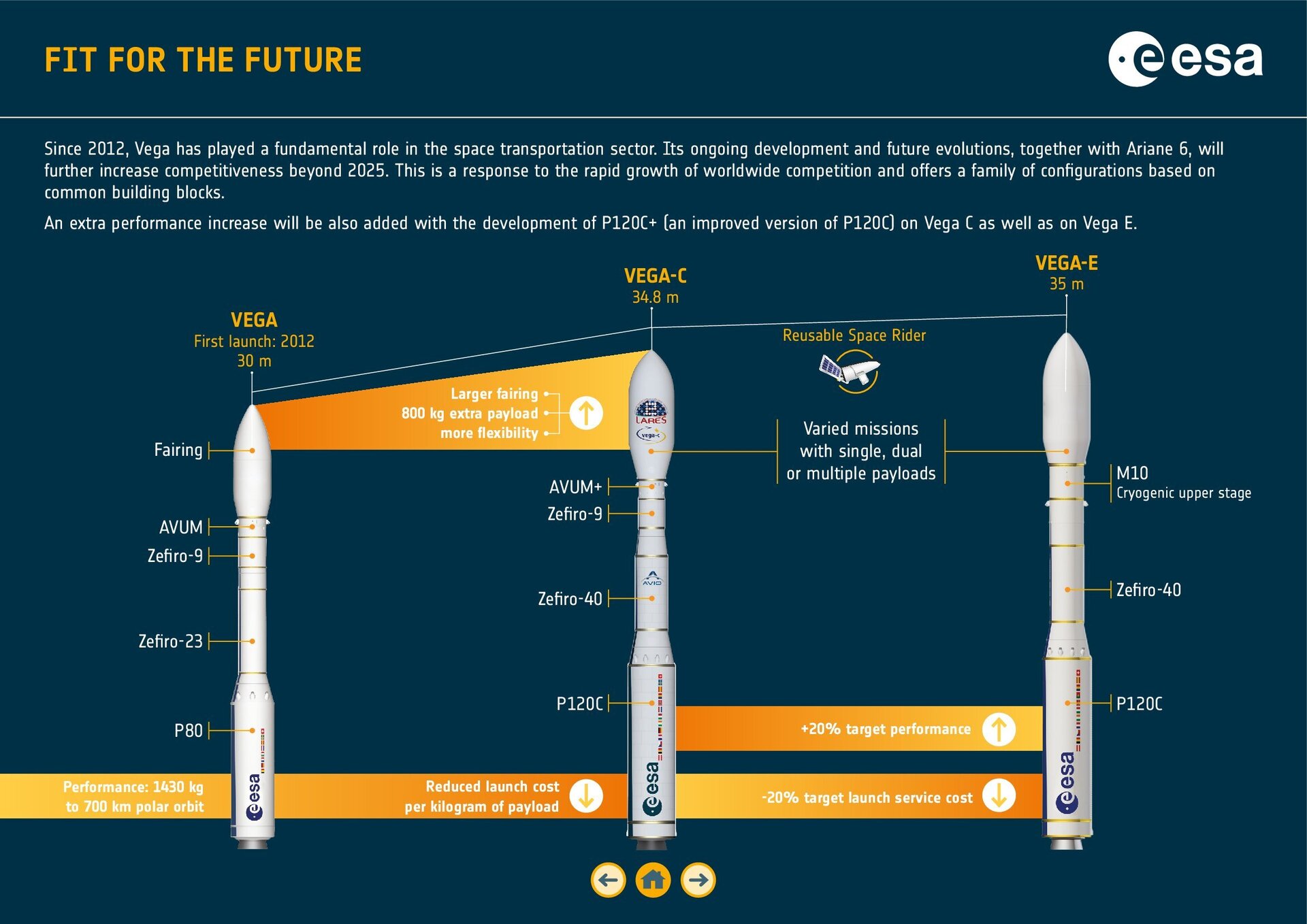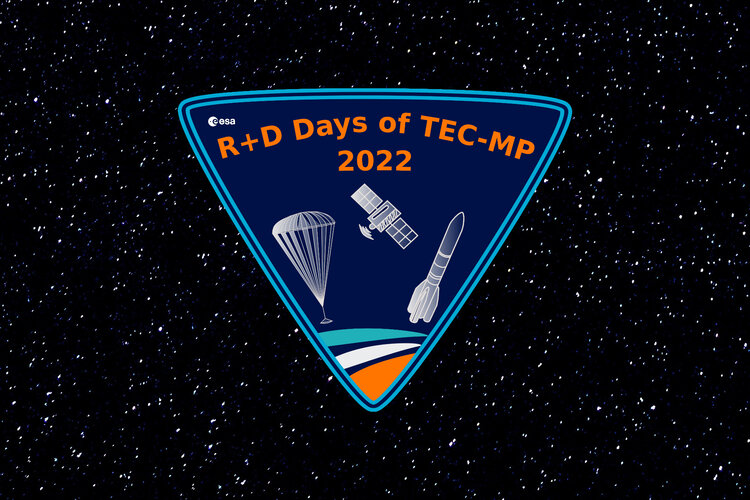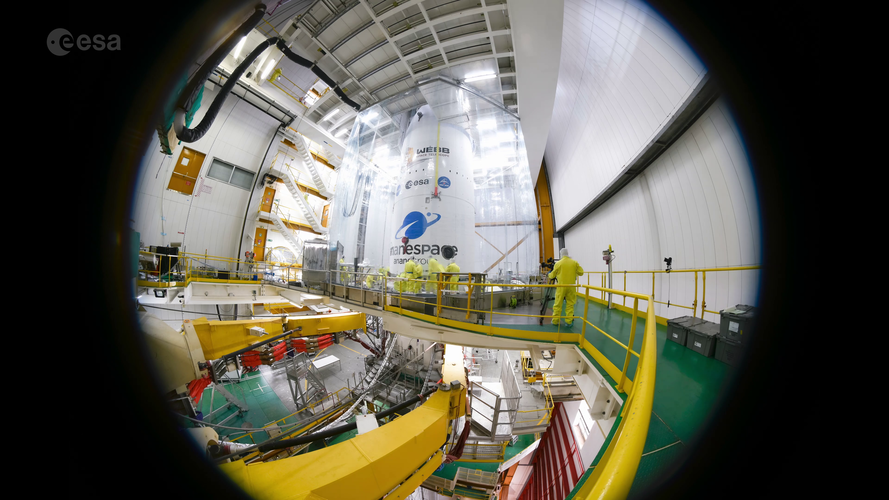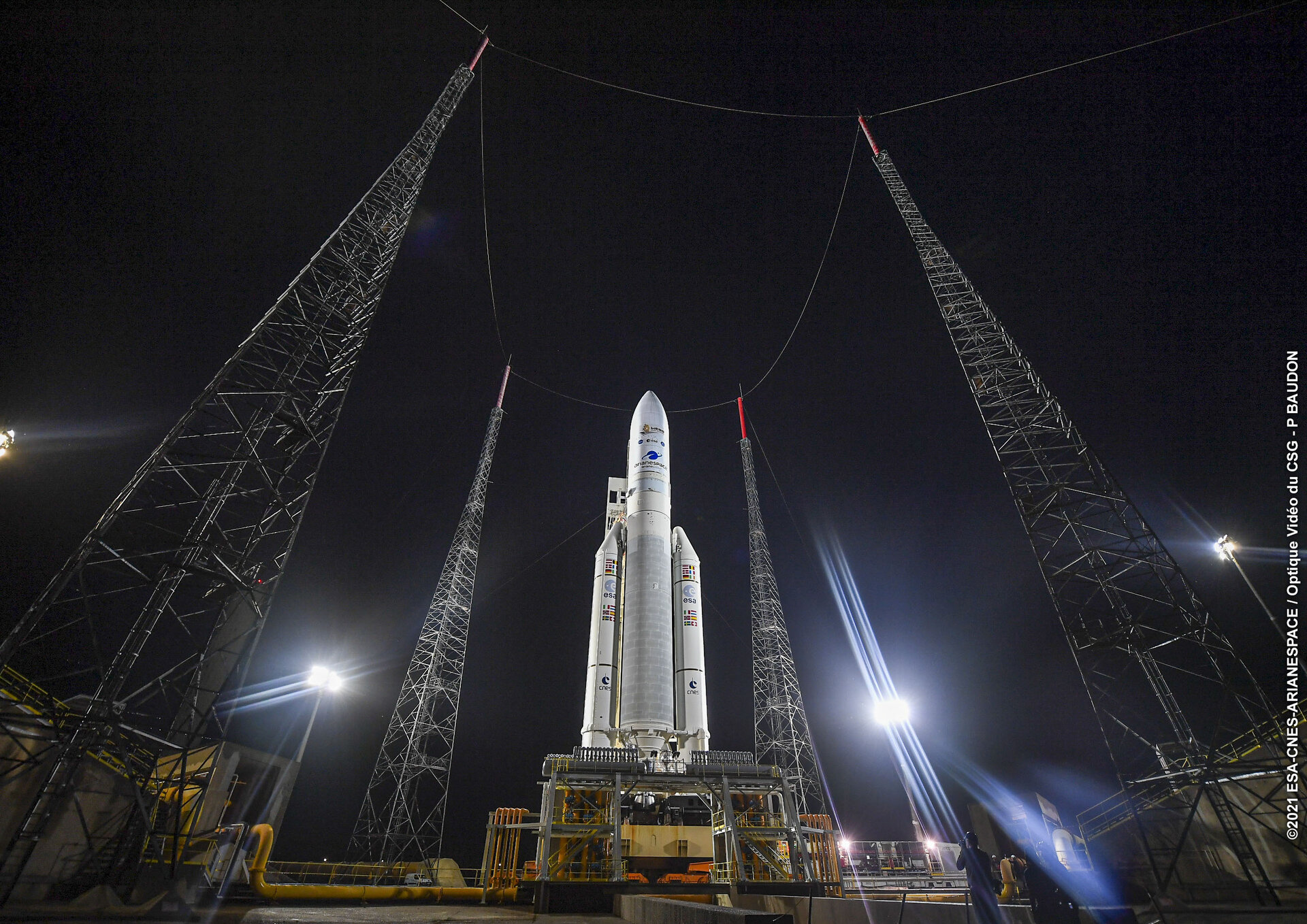
 Video: 00:01:24
Video: 00:01:24
Europe’s Spaceport in French Guiana is preparing for the arrival of Ariane 6, ESA’s new heavy-lift rocket. The latest round of testing aims to validate the system of fuel lines and mechanical supporting arms that will keep Ariane 6 topped up with liquid hydrogen and liquid oxygen in the critical moments before liftoff. This work is part of the final preparations of the new Ariane 6 launch complex and all the systems necessary for a launch.
With the mobile gantry fully retracted – as for a launch – two articulated arms attached to the upper part of the Ariane 6 mast on the launch pad were separated and retracted while filled with hydrogen that is cooled to its liquid state at cryogenic temperatures. This manoeuvre mimics the seconds before liftoff.
The ‘cryo-arms’ are part of the fluidic connection system which connects to Ariane 6 in the final countdown to launch. They support the upper umbilicals which supply cryogenic top-up fuel, maintain the correct pressurisation of the tanks, cool the engines before ignition and generally keep the upper stage in an optimal condition right up to the point of liftoff. The same umbilicals allow the fuel to be drained safely if a launch is aborted.
Each arm is 13 m long and weighs 20 tonnes. One arm supplies liquid hydrogen at -250°C, the other supplies liquid oxygen at -180°C. When Ariane 6 lifts off, these arms will disconnect from the rocket and then pivot away quickly, in just 2.6 seconds, to avoid interfering with the rocket's ascent.
This manoeuvre requires great precision. Almost simultaneously it is necessary to disconnect the arms, protect the supply hoses from gas ejections from the boosters and allow the launch vehicle to pass while avoiding any contact with it.
A 50-tonne counterweight inside the mast speeds up the retraction of the arms. A smart damping system allows the arms to brake before the end of their swing backwards in order to protect the mechanical links with the mast.
Keeping the fluid supplies connected with the rocket until the moment of liftoff guarantees the best availability and simplification of the interface with the launch vehicle.
The disconnection of the cryo-arms from Ariane 6 is much faster than it is from Ariane 5, where the manoeuvre comes six seconds before liftoff. This means the sequence for Ariane 6 can be triggered at the latest possible moment in the countdown, reducing the chance of unnecessary disconnects in the event of an aborted launch.
Technical qualification tests are continuing. The objective now is to complete the qualification process of the hydrogen and oxygen filling lines and launcher interfaces for the lower, core stage.
Further information:
Ariane 6
Europe’s Spaceport
#launchers #space #science #esa #europeanspaceagency
posted by pod_feeder_v2





